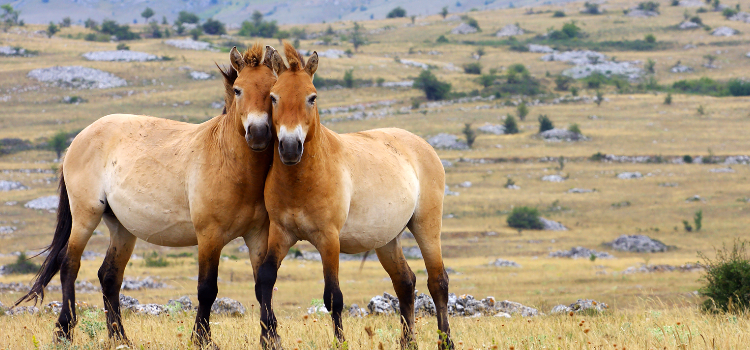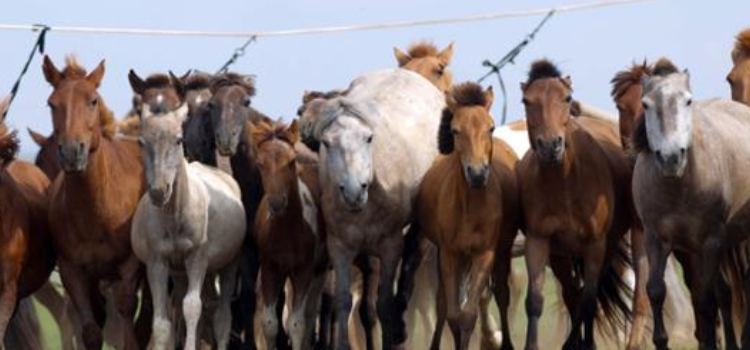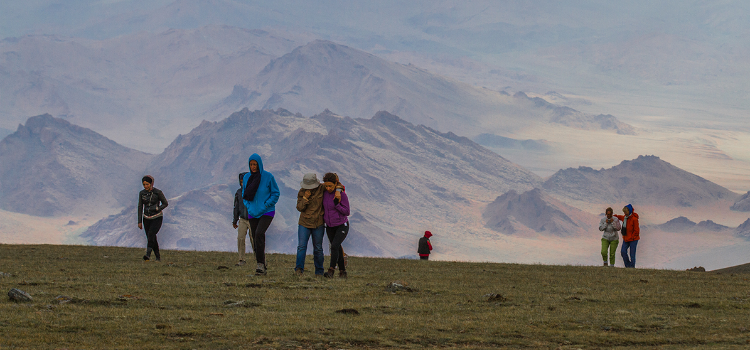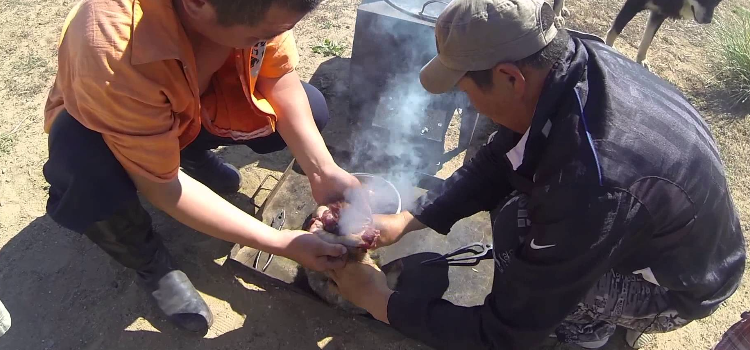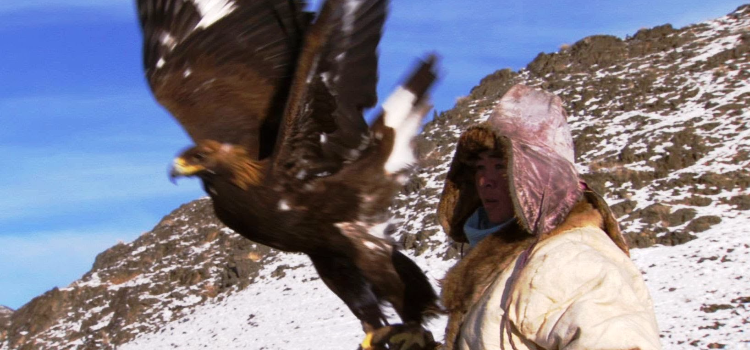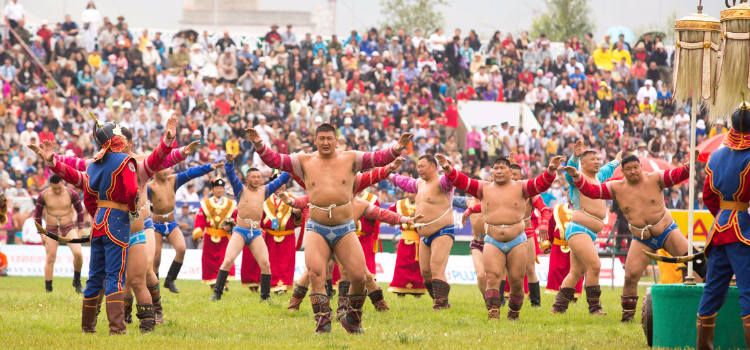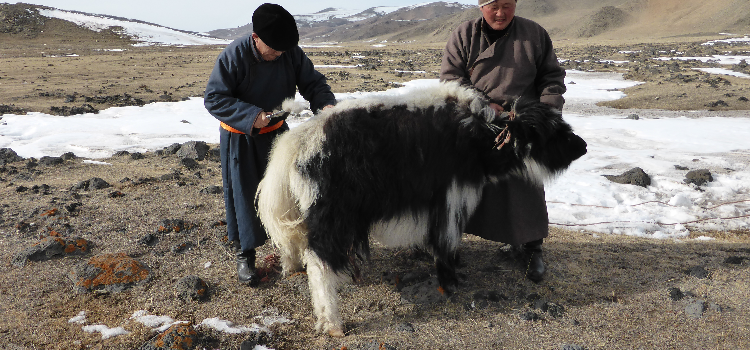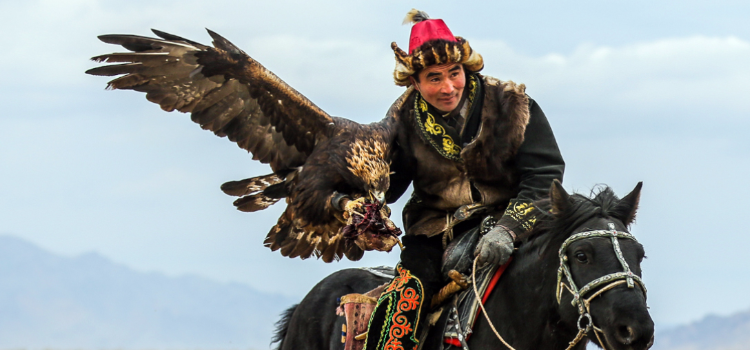04
Posted By : Admin/1113
Przewalski’s horse or takhi was described for the first time in 1881 by the Polish naturalist Nikolai Prjevalski, who gave it its present name. The takhi, whose name means “sacrifice, respect”, has a small morphology. It measures between 1 metre 20 and 1 metre 35 (4 – 4,43 feet) at withers and weighs between 250 and 350 kilograms (551 – 771 pounds). In comparison with the domestic horse, its head is wider and squarer, and its jaws are less prominent. Its mane looks like a brush, the colour of its coat varies from brown to ochre, with white marks around the eyes and the nostrils, and black stripes on the legs. It has 66 chromosomes instead of 64 like the domestic horse. It’s very fast and very resistant. The takhi was a rare species, because the Mongolians used to hunt it for its meat.
This species of horse is endemic of Mongolia and disappeared in the 1960’s because of the intensive shooting parties organized by Russians. These thought the species was extinct and were surprised to find some herds in Mongolia, so they decided to catch them in order to send them in the zoos of Europa. Unfortunately, doing this, they wiped out the rest of the species. The last herd had been seen in 1967, and the last horse in 1969.
The “Foundation for the preservation and protection of the Przewalski's horse”, founded in Netherlands in 1977, and the governor of Khustain Nuruu, took part together in the reintroduction of the takhis from 12 horses that were living in captivity. The sixteen first horses coming from Russia and Netherlands arrived in Khustai Park on the 6th of June 1992. The following year, the first foal of the reserve was born. From the second generation, the horses got used to a free life again, after the years they had spent in captivity in the zoos. Every two years, and during ten years, several horses were imported in Mongolia, until 84 horses. This system allows them to adapt to the climate and to favour the constitution of groups. Their release was possible only after this first step.
Today, there are more than 2000 Przewalski’s horses.
It’s easy to observe Przewalski’s horses in Khustai Park. They come down from the mountains of the park to drink in the rivers that are easily accessible to visitors at the very beginning and at the end of the day. You will have leisure to observe them in their natural habitat.

